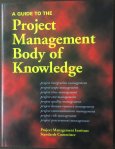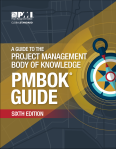The days when projects were simply projects and project success was defined by the ‘iron triangle’ are long gone. The intention of this post is to try and bring together four aspects of current thinking and their embedded concepts into an overall model of project management in the 21st century. The starting point is traditional project management as defined in the soon to be published 6th Edition of the PMBOK® Guide; the major change (incorporated in the 6th Ed.) is ‘Agile Project Management’. The two significant extensions to traditional project management that go beyond the PMBOK® Guide are ‘Complex Project Management’ and ‘Megaproject Management’. The focus of this paper is on the skills and competencies needed by the ‘managers’ of these different classifications of ‘projects’ rather than the scope of the different concepts (more on this later).
As a starting point, there seems to be a generally accepted view that the competencies needed to be a successful project manager underpin all of the other concepts. There are some distinctly different techniques used in Agile, only some of which flow into traditional project management, but in other respects ‘agile’ and ‘good project management’ are very closely aligned. Managing complexity requires a significant additional set of competencies that build onto the traditional requirements. Then, whilst many complex projects do not meet the definition of a ‘megaproject’, every megaproject is by definition a complex project with an additional layer of management capabilities needed to deal with its impact on society. This basic framework is outlined below:

Stakeholders
All forms of project management recognise the importance of the project stakeholders. Projects are done by people for people and the ultimate success or failure of a project is defined by people – all ‘stakeholders’. My work on the PMBOK® Guide 6th Edition core team was very much focused on enhancing the sections on stakeholder engagement and communication (which is the primary tool for engaging stakeholders). And as the scale of projects increase, the number of stakeholders and the intensity of public focus increases dramatically.
A heuristic suggested by Prof. Bent Flyvbjerg is as a general rule of thumb: ‘megaprojects’ are measured in billions of dollars, ‘major projects’ in hundreds of millions, and ‘projects’ in tens of millions or less. To quote the late Spike Milligan, ‘Money can’t buy you friends but you do get a better class of enemy’ – and while many stakeholders may not be ‘enemies’, the ability of stakeholders to organise around a megaproject tends to be far greater than around a small internal project. Consequently, the focus on stakeholders should increase significantly in excess of the increment in cost as you flow from small to megaprojects.
However, regardless of size, the need to identify, engage, manage, and deliver value to stakeholders, through the realisation of beneficial change, is consistent through all of the concepts discussed below. This and the temporariness of each ‘project organisation (ie, team)’ are the two consistent factors that underpin the concept of project management; and ‘temporariness’ is the key factor that separates projects and programs from other forms of management and ‘business as usual’.
Traditional Project Management.
The recognised guide for traditional project management is the PMBOK® Guide augmented to a degree by ISO 21500. The publicly released information on the 6th Edition highlights the need for flexibility in applying its processes, including the requirement to actively consider ‘tailoring processes’ to meet project requirements, and the value agile thinking can bring to the overall management of projects (see below).
The frame of traditional project management starts once the project is defined and finishes once the project has delivered is objectives. While this scope is somewhat limited and there may be a need to expand the scope of project management to include project definition at the ‘front end’, and benefits realisation and value creation after the outputs have been delivered (this will be the subject of another post), the knowledge, skills and competencies required to manage this type of project management are well understood.
Each project has four basic dimensions, size (usually measured in $), technical difficulty, uncertainty and complexity (these are discussed in detail in: Project Size and Categorisation). In the right circumstances, Agile can be an effective approach to resolving uncertainty. However, at an undefined point, the increase in complexity reaches a point where the concept of ‘complex project management’ becomes significant and really large projects are the realm of ‘megaproject management’. But the underpinning capabilities required to manage all of these extensions remains the conventional project management skills.
Agile Project Management
Agile has many facets. The concepts contained in the Agile Manifesto basically reflect a shift away for a ridged focus on process towards a focus on people (stakeholders) and adapting to change to achieve a successful outcome. These concepts are now firmly embedded in the PMBOK® Guide 6th Edition and apply to every project. Where agile projects separate from traditional projects is recognising that in a range of soft projects, including software development, taking an iterative and adaptive approach to understanding the scope can often achieve a better outcome. Understanding what is actually helpful to the client develops based on learned experience from earlier iterations and these needs are incorporated into the next iteration of the development allowing a better outcome to be delivered to the client. This is not significantly different to much older concepts such as ‘rolling wave planning’ and progressive elaboration – there really is little point in making detailed plans for work you don’t know much about. The difference is Agile actively expects the scope to be adapted to the emerging requirements of the client, the other approaches seek to add detail to the plans at an appropriate point in time whilst the overall scope remains fundamentally unchanged.
Agile does not even need a project to be useful. Many of the Agile techniques work in any situation where there is a backlog of work to get through and can be effectively used outside of the concept of a ‘project’, this particularly applies to routine maintenance work of almost any kind. A discussion on the value of Agile, and its limitations, are contained in our paper Thoughts on Agile.
However, for the purposes of this post, the key aspects Agile brings to the discussion, that are essential for effectively managing most types of project, are contained in the Manifesto – a preference for:
- Individuals and interactions over processes and tools.
- Customer collaboration over contract negotiation.
- Responding to change over following a plan.
The Manifesto recognises there is value in the items on the right, but values the items on the left more.
Complex Project Management
Complexity is a facet of every project and program. Complex project management skills become important at the point where complexity becomes a significant inhibitor affecting the delivery of a successful outcome from the project (or program). This point may occur well before ‘complexity’ becomes the defining feature of the project.
Complexity is a very different concept to a complicated project, technically complicated work can be predicted and managed; launching a new communication satellite is ‘rocket science’, but there are highly skilled rocket scientists available that undertake this type of work on a routine basis. As with any traditional project, the costs, resources and time required can be predicted reasonably accurately.
The dominant feature of complexity is the non-predictability of outcomes. Non-linearity, ‘the tipping point’, and emergence describe different ways outcomes from a slightly different starting point can vary significantly compared to previous experience or expectations (for more on the concepts of complexity see: Complexity Theory). Complexity arises from various forms of complex system, these may be organic (eg, a river’s eco-system), man-made (eg, an overly complicated system-of-systems such as too many interconnected software applications automatically interacting with each other), or interpersonal (eg, the web of relationships within and between a project team and its surrounding stakeholder community). In all of these situations, the ‘system’ behaves relatively predictably, dealing with the effects of stresses and stimuli up to a point (and normal management approaches work satisfactorily); but after that point adding or changing the situation by a small increment creates completely unexpected consequences.
Interestingly, from the perspective of managing a project, these three areas of complexity are closely interlinked, the complex behaviour of the environment and/or man-made systems-of-systems feeds back into the perceptions of stakeholders and the activity of stakeholders can impact on both the environment, and the way complex systems function. Similarly, dealing with emerging anomalies in the environment or in a complex system needs the active cooperation of at least some of the project’s stakeholders. Consequently, the focus of complex project management is dealing with the consequences of the inherently unpredictable and complex behaviours and attitudes of stakeholders, both within the team and within the surrounding stakeholder community.
Some projects and programs, particularly large ones, are obviously complex from the outset and can be set up to make effective use of the ideas embedded in complex project management. Others may be perceived as non-complex ‘business-as-usual’ and tip into complexity as a result of some unforeseen factor such as a ‘normal accident[1]’ occurring or simply because the perception of ‘straightforward’ was ill-founded. Underestimating complexity is a significant risk.
Where the project is perceived to be complex from the outset, a management team with the competencies required to deal with the nuances of managing a ‘complex project’ can be appointed from day one (and if appropriately skilled people are not available, support and training can be provided to overcome the deficiencies) – this maximises the probability of a successful outcome. When a project unexpectedly falls into a state of complexity the situation is far more difficult to manage primarily because the people managing the work are unlikely to be skilled in complex project management, will try to use normal management techniques and most organisations lack the resources needed to help rectify the situation – skilled complex project managers are in short supply globally.
One initiative designed to overcome this shortage of ‘complex project managers’ and build an understanding of ‘complex project management’ is the International Centre for Complex Project Management (ICCPM). ICCPM’s approach to complex project management is to see this capability as an extension of traditional project management (as inferred in the diagram above). The ICCPM view is that while traditional approaches are insufficient to effectively manage a complex project on their own, you cannot manage a complex project without a strong foundation based on these traditional skills and processes. The relationship is described by the ICCPM as:

What changes is in part the way the traditional capabilities such as scheduling and budgeting are used, overlaid with the expectation these artifacts will need to adjust and change as the situation around the project changes, augmented with a range of ‘special attributes’ particular to the process of managing a complex project. These ‘special attributes’ are valuable in the management of any project but become essential in the management of complex projects. These capabilities and competencies are defined in the ICCPM’s Complex Project Manager Competency Standard available from: https://iccpm.com/.
Complex projects can vary in size from relatively small undertakings involving factors such as updating a complex systems-of-systems, or a high level of political sensitivity, through to the megaprojects discussed below. A complex project may not be a megaproject or even a major project, but every megaproject and many major projects will also be a complex project requiring complex project management capabilities for a successful outcome.
Megaproject Management
Megaprojects are defined as temporary endeavours (i.e. projects or programs) characterised by:
- A large investment commitment;
- Vast complexity (especially in organizational terms); and
- A long-lasting impact on the economy (of a country or region), the environment, and society.
They are initiatives that are physical, very expensive, and public. By definition, megaprojects are complex endeavours requiring a high degree of capability in the management of complex projects. In addition megaprojects typically involve a number of other facets:
- Megaprojects are by definition a program of work (see: Defining Program Types).
- Many are implemented under government legislation, requiring skills and knowledge of government processes and the ability to operate within the ambit of ‘government’. This is a very different space in terms of accountability and transparency compared to private enterprise.
- Most interact with a range of government agencies at all levels of government from local to national. These stakeholders often have a very different set of agendas and success criteria compared to the organisation running the megaproject.
- The size of a typical megaproject involves large amounts of money and therefore increases the risk of corruption and other malfeasance – governance and controls need to be robust[2] to maintain high ethical standards.
- The ‘political attractiveness’ of doing a megaproject (eg, hosting the Olympics) distorts decision making; care in the megaproject development process is required to reduce the effect of optimism bias and strategic misrepresentation (see: The reference case for management reserves).
- Megaprojects are financially fragile[3] and fragility is typically irreversible. Once broken the fragile entity cannot be readily restored to its original function. Financial (or investment) fragility is defined as the vulnerability of a financial investment to becoming non-viable, i.e., losing its ability to create net economic value. For example, the cost risks for big dams are significant; the actual costs more than doubles the original estimate for 2 out of 10 dams; triples for 1 out of every 10 big dams. But managers do not seem to learn; forecasts today are likely to be as wrong as they were between 1934 and 2007.
Recognising the scope and complexity of managing a megaproject and training people appropriately can mitigate the risks, the UK experience around Terminal 5 and Cross Rail (both £4 billion projects) suggest that achieving a good outcome is viable provided the organisation commissioning the megaproject is prepared to invest in its management. It’s probably no coincidence the management of megaprojects and their associated risk has been the focus of the Saïd Business School, University of Oxford for many years.
Summary
The competencies needed to manage projects grows in line with the increase in complexity and the increase in size. There are definitely additional elements of competency needed at each step in the framework outlined above. What is far less clear is how to demarcate between normal, complex and megaprojects! Every project has a degree of complexity and a degree of size. The values suggested above to separate normal, major and mega projects are arbitrary and there is even less clarity as to the transition between normal and complex projects.

I suspect the domain map demarcating the different disciplines will end up looking something like this but there’s a lot of research needed to define the boundaries and assign values to the axis (especially in terms of measuring the degree of complexity). Hopefully, this blog will serve to start the discussion.
______________________
[1] Normal accidents are system accidents that are inevitable in extremely complex systems. The three
conditions that make a system likely to be susceptible to Normal Accidents are:
– The system is complex
– The system is tightly coupled
– The system has catastrophic potential
The characteristic of the system leads to multiple failures which interact with each other, despite efforts to avoid them.
[2] For more on governance and ethics see: http://www.mosaicprojects.com.au/PM-Knowledge_Index.html#OrgGov1
[3] From: Big Is Fragile: An Attempt at Theorizing Scale, in Bent Flyvbjerg, ed., The Oxford Handbook of Megaproject Management (Oxford: Oxford University Press)















